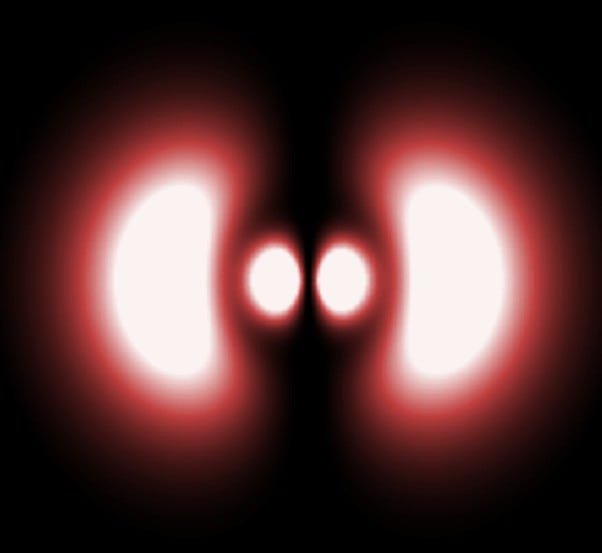What If Electrons Had Emotions? Exploring Conscious Quantum Particles
Written on
Chapter 1: The Concept of Emotional Electrons
This idea may seem peculiar, but it's a thought-provoking topic. Renowned theoretical physicist Richard Feynman once remarked,
“Consider how much more complex physics would be if electrons were capable of feelings.”
Recently, I engaged in a discussion with a friend about this intriguing notion—what if electrons truly experienced emotions? Our grasp of the universe relies heavily on the principles of physics, which have been formulated over centuries through observation, hypothesis, experimentation, analysis, and verification. From discovering distant exoplanets to unveiling fundamental particles, the scientific method has consistently guided these endeavors.
Electrons are subatomic particles that orbit the nucleus of an atom. They possess a negative charge, a mass of approximately 9.1 x 10^-31 kg, and a quantum spin of 1/2. Discovered by physicist Joseph John Thomson around 1897, electrons play a vital role in atomic structure. However, let’s consider a different perspective—what if these particles had consciousness that could evoke feelings? Would our understanding of physics remain intact, or would it unravel? While this may sound absurd, I am eager to delve deeper into this topic. I will break down the implications into various sections for analysis.

Chapter 2: The Nature of Consciousness and Electrons
First and foremost, it’s important to recognize that mere consciousness wouldn’t suffice. Hypothetically, if electrons could feel but were powerless to act on those feelings, it would be meaningless. Let’s assume that electrons could experience some basic emotions and possessed coping mechanisms to respond to external stimuli.
Traditionally, electrons are indistinguishable particles; they are uniform and cannot be differentiated based on intrinsic physical characteristics. However, if they were to experience emotions, their behavior would vary in different environments. Some electrons might react sensitively when energized, while others might not. This variability would imply a significant departure from established physical laws, as electrons would no longer behave uniformly under similar conditions. Consequently, this would alter the wave function of electrons and their probability density.
Electrons are recognized as elementary particles that exhibit wave-like characteristics according to the principle of wave-particle duality. The intrinsic properties of such particles within any quantum system are represented by a wave function, denoted by the symbol Ψ. The square of the absolute value of the wave function indicates the probability density, which reveals the likelihood of a particle appearing at a specific location within a quantum system. If electrons were to experience feelings, they might no longer be anti-symmetric particles; the values of wave functions could differ when two electrons are exchanged, disrupting current mathematical models.
Another critical consequence would be the collapse of modern quantum theory. The mathematical frameworks that currently describe electron behavior would likely fail, as the energy absorbed and emitted by electrons during transitions between energy states would no longer be constant. In a whimsical scenario, some electrons might desire to be excited by external energy, while others might resist.

Chapter 3: The Impact on Matter and Electrodynamics
The structure of matter as we understand it would fundamentally change. The electron cloud concept would lose significance, allowing for the possibility of observing electrons moving outside their probabilistic regions. Electrons might even choose to collide with nucleons, contradicting established classical electrodynamics. They could opt out of remaining within atomic orbits, existing independently instead. Conventional electric current would be impossible, as electrons would only flow if external energy exceeded their personal energy thresholds. Conducting experiments with electrons would not only be challenging but could also raise ethical concerns.
Despite numerous psychological investigations, the nature of consciousness remains elusive. Is consciousness exclusive to living beings? Are consciousness and life merely different interpretations of the same phenomenon? Can we cultivate or manipulate our consciousness? Is it a neurological process within our brains or can it be elucidated through quantum properties? These questions linger, making it fascinating to explore the intersection of consciousness and quantum physics.
Thank you for reading. If you enjoyed this exploration, please consider showing your support. Feel free to become a member through this link or buy me a coffee. Stay tuned for more intriguing discussions.
Chapter 4: Understanding Emotions in Quantum Particles
The first video, How can electrons have the same charge and exist in pairs?, delves into the intriguing question of electron behavior and interactions, shedding light on the complexities of particle physics.
Chapter 5: The Emotional Landscape of Atoms
The second video, Creating Emotions from Atoms, explores the potential emotional dimensions of atomic and subatomic particles, raising questions about consciousness at the quantum level.